Our latest outing was to an ostrich farm just west of here. Road trips, even short ones, in South Africa are always interesting. On the way we encountered really slow traffic due to major construction projects they were doing on very small roads, with heavy machinery far closer to cars than would be allowed in the USA. We passed amazing beaches with flour-soft sand and tons of surfing schools. We drove past miles and miles of shanty town shacks and were sobered by the masses of people who live in those conditions. We drove through charming towns with less than charming customer service. It’s all a day in the life in Africa so we accepted it in stride and kept on going. There were ostriches at the end of this rainbow, so we knew it would be worth it.

We learned about cheetahs last week and this week it was a great follow-up to now explore the ostrich world. Unlike the cheetah, ostriches are fairly hearty animals and somewhat resistant to disease and predators due to their strong immune system, fast running speed as well as hearty stamina. This farm breeds ostriches for their eggs, their hide and their meat. Circle of life, people. If you are aghast at this reality you might want to click that X in the upper right. We love ya, but this won’t be a post for you.
Big, Strong Eggs
Our guide started off by sharing the very unique properties of ostrich eggs. They are SO BIG, about the relative size of 18-20 chicken eggs. And they are strong. She made us all stand on it so we could see that it could easily support our weight. Dan weighs in at 98 Kg and she said it can withstand up to 125 Kg in weight. However, if you dropped it, the sudden force would probably break it. So it’s all about the impact. We were told that the taste is similar to a chicken egg, although a bit more creamy. At this point I’m starting to realize the valuable qualities of an ostrich. If we ever have to escape the apocalypse an ostrich pair or two might be a good thing to have on our self-sustaining farm. An ostrich egg could feed a lot of people AND ostrich eggs are lower in cholesterol and saturated fat, so they’re healthier too. We are all about good health on our post-apocalypse farm. #notreally


We then went on to learn the process of ostriches laying eggs. They are not smart animals. Their brains are no bigger than their eyeball. They normally lay 7-10 eggs at a time but if you take them away, they will forget they laid any and then lay more. This is how the farm gets new eggs from their ostriches all throughout the breeding season, which is September to April. Throughout the season one ostrich could produce as many as 42 eggs. From April to September they rest. Just like penguins and most birds, ostriches mate for life.
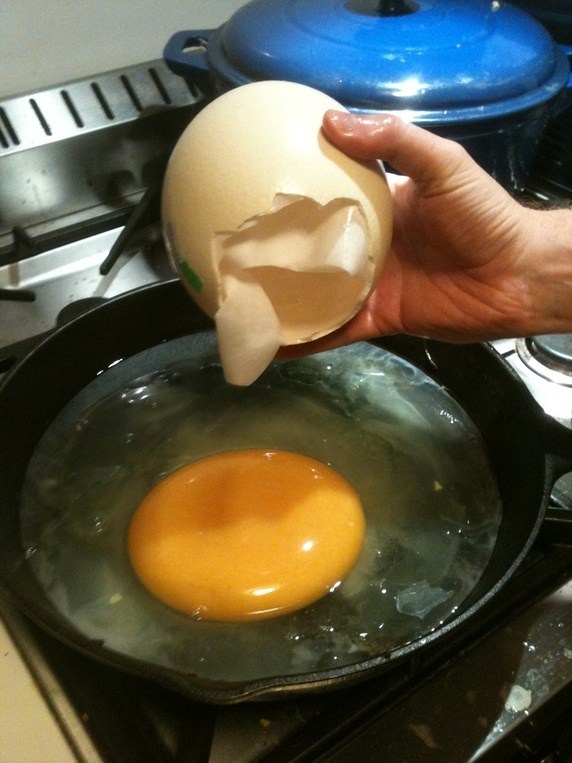
Hatching
The very first egg an ostrich lays is the practice egg. It serves the purpose of cleaning out the birth canal to prepare the body for an egg with a chick. That first egg is small, weak, and full of stones. After that the ostrich is ready to lay an egg that will result in a chick (or a large omelette). The eggs take 42 days (exactly) to incubate and in the wild the mother and father take turns sitting on the egg and turning it so the baby does not stick to the inside of the egg. The male bird is darker in color for evolutionary reasons. Hence the male takes the night shift because he is more camouflaged against predators due to his darker feathers. At this point in the presentation the girls nodded knowingly because of their genetics class.
Immediately after hatching, baby ostriches are able to stand but not much else. When hatched at the farm, the babies are immediately introduced to their human mother who takes on the imprinting and all training. Ostriches, at birth, have no instinct. They’ll just stand there. They will not move nor search for food. But they are curious so their human mother has to intrigue them into eating, usually by tapping on their shiny food bowl. They will be attracted to the noise and the shiny dish. Ostriches are social and if one member of their pack starts to run, they all start to run. The staff reported that putting them in their pen at nighttime is a very easy job.
As they grow, the farm has to protect the babies from predators, mainly baboons and eagles. Baboons want to eat the eggs and the eagles and other flying predators want the chicks. Therefore, they are kept in special, protected pens where they can grow in peace. Every once in awhile an ostrich bully from one group (they are grouped by ages) needs to be removed and put with an older group, who will put him in his place. They are also one of the fastest growing animals. They grow over an inch a day in the beginning.
As we looked at the different ages of ostriches we saw one who had legs that were deformed due to sticking to the inside of the egg. He seemed to walk fine but he had to compensate. We asked what will happen to him and the guide said calmly, “He’ll be a handbag”. Oh. OK.
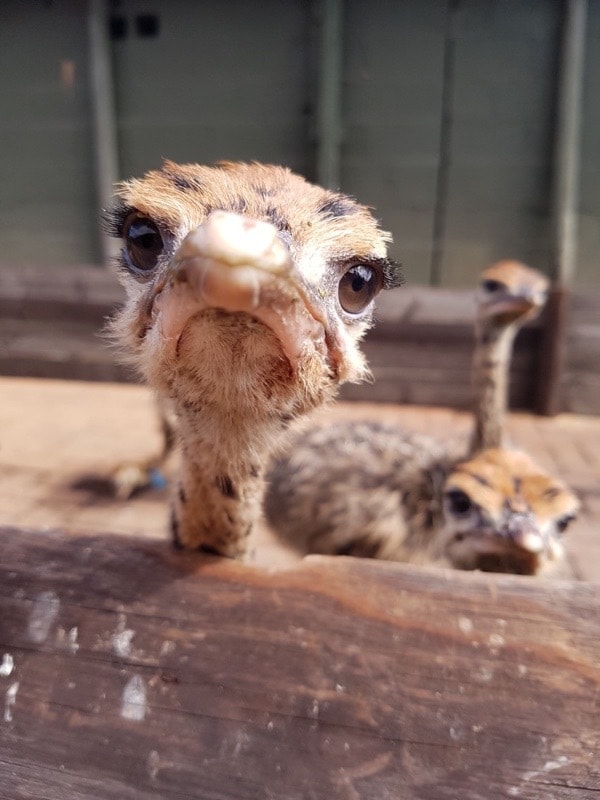
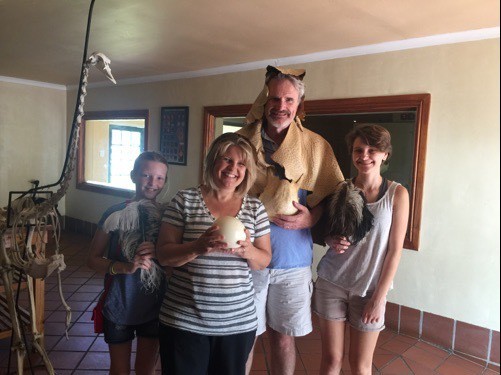
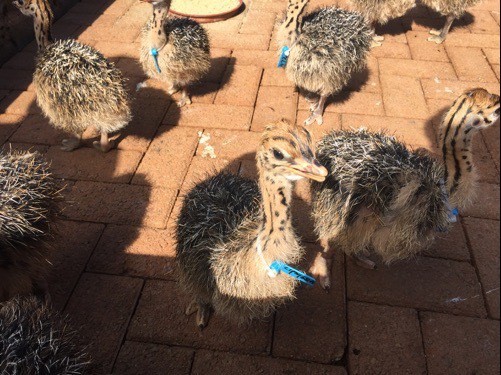
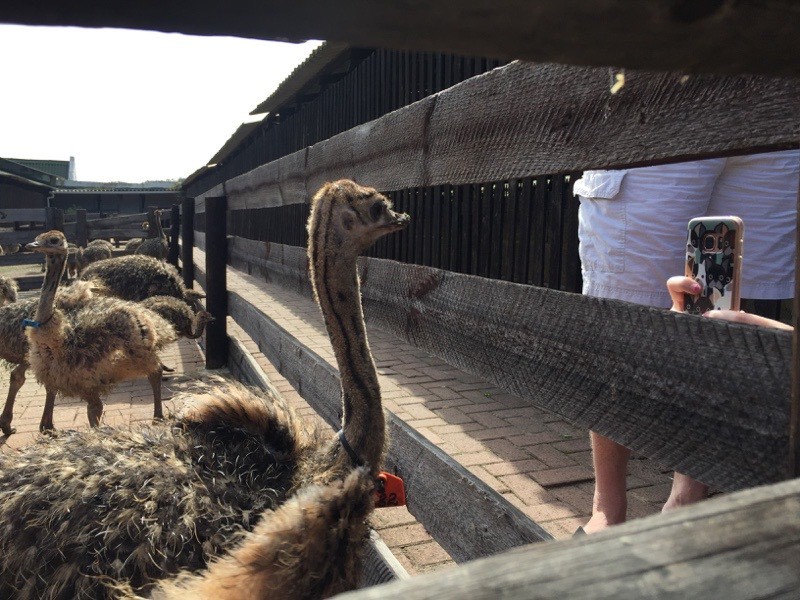
Ostrich Adults
Ostriches eat pretty much anything they can find on the ground, and they love shiny things. They also eat small stones, not because they are stupid but because they have no teeth to chew their food PLUS they have no digestive acid in their stomach, and the stones assist in the grinding up of the food. Their digestive system is so primitive that they also eat their own poop because they don’t absorb all the nutrients the first time around. An adult ostrich carries about 1 kg (2.2 lbs) of stones in it’s stomach at any one time.
They are fully grown at 18 months and at that point, they are perfect for producing meat and leather. However, if you want them for their eggs, they have a 50-60 year lifespan and are very hearty. Cheetahs are one of the few predators of an ostrich because cheetahs are the only animal that can outrun an ostrich. However, the ostrich has the advantage in that it can run for LONGER than a cheetah. A cheetah can maintain it’s top speed for about 30 seconds. An ostrich can get up to a full speed of 70 kph (43 mph) within 3 strides and can run at that speed for over 30 minutes without stopping. Their wind pipe runs along the back part of their neck which allows them to breathe easily during their run. So although a cheetah might want to eat an ostrich, they can only catch them if it’s by surprise. Ostriches also have very good vision, being able to see for over 3 kilometers. Their eye is over 5 cm long for maximum vision.
So now maybe you’re thinking, hey, maybe I should have an ostrich for a pet! They sound good to have around! But alas, an ostrich is not a nice animal. It’s long legs can lift out in front of it’s body to kick you, and after it’s kicked you, it will rip you open with it’s huge claw on the way down. Our guide said if you are ever being attacked by an ostrich, you should lay down as flat as you can on the ground. It might stand on you but it won’t be able to kick you if you are that low. I’ve noted that fact for my Apocalypse Farm Survival Guide. #futurebestseller
Ostriches’ wings reach a span of about 2 meters (6.5 ft) and are used in mating displays, to shade chicks, to cover the naked skin of the upper legs and flanks to conserve heat, and as “rudders” to help them change direction while running.
Contrary to popular belief, ostriches do not bury their heads in the sand: the myth probably originates from the bird’s defensive behavior of lying low at the approach of trouble and pressing their long necks to the ground in an attempt to become less visible. Their plumage blends well with sandy soil and, from a distance, gives the appearance that they have buried their heads in the sand.
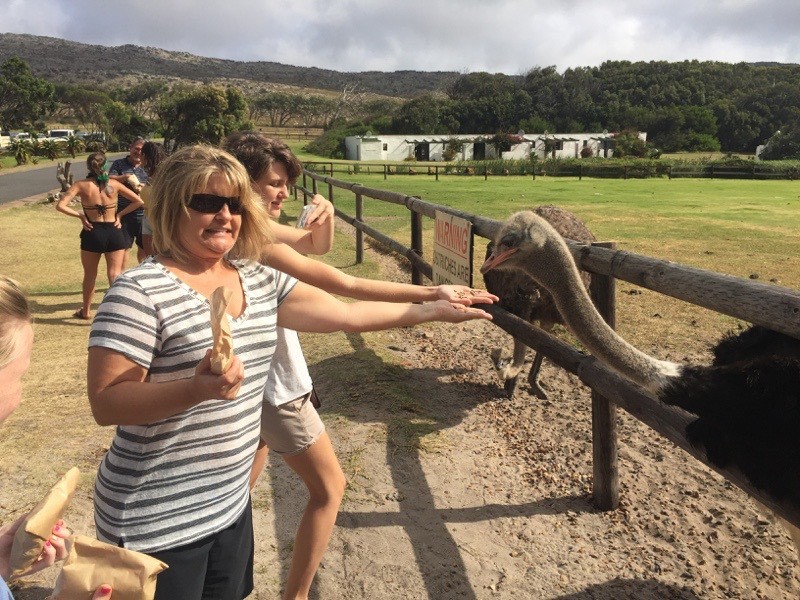


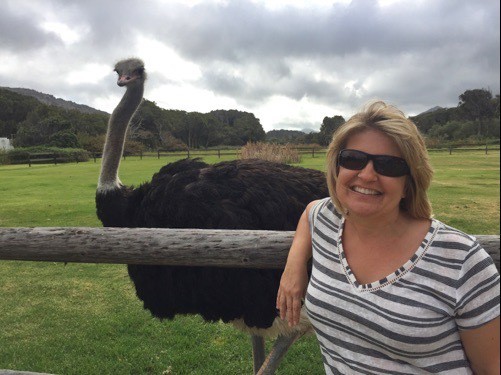

Ostrich Products
Ostriches are a very good resource for a number of items. One ostrich produces 40 kg (88 lbs) of meat, which is a red meat a bit richer than beef, and less fatty. Ostrich meat is recommended by medical practitioners and dietitians and often referred to as “the healthiest red meat”. Ostrich leather is also known for it’s soft, supple feeling and high quality. The eggs are decorated and sold as art. Pieces of egg shells are very strong and very popular for buttons and beading. Looks like we’ll be doing crafts on my apocalypse farm too.
Speaking of handbags, we had no idea that ostrich leather was so expensive. Evidently it’s a very thick leather, the second thickest leather in the world after kangaroo. Whereas cow hide has 3 natural layers, ostrich hide has 14 layers. It also has natural bumps where the feathers come out so it can be used for more decorative items, just by using certain parts of the hide.





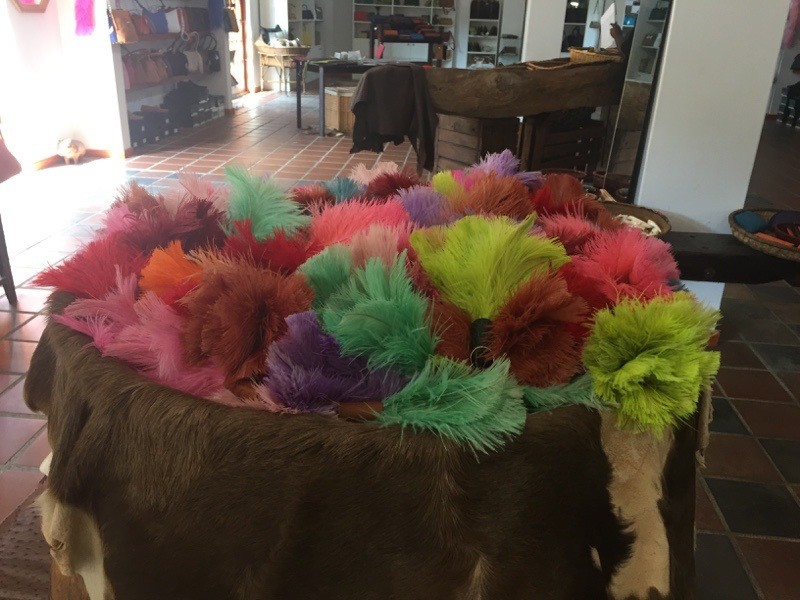
Some Spider Dude
Another critter on the farm was this spider. Evidently he is so important that they have started to breed them at a farm nearby. The web he spins has such strong thread that it’s used for bullet proof vests. He’s a handy guy to have around. Maybe I’ll invite him to my apocalypse farm. That yellow “twine” looking stuff is part of his web. He’s just a little below the center of the picture.
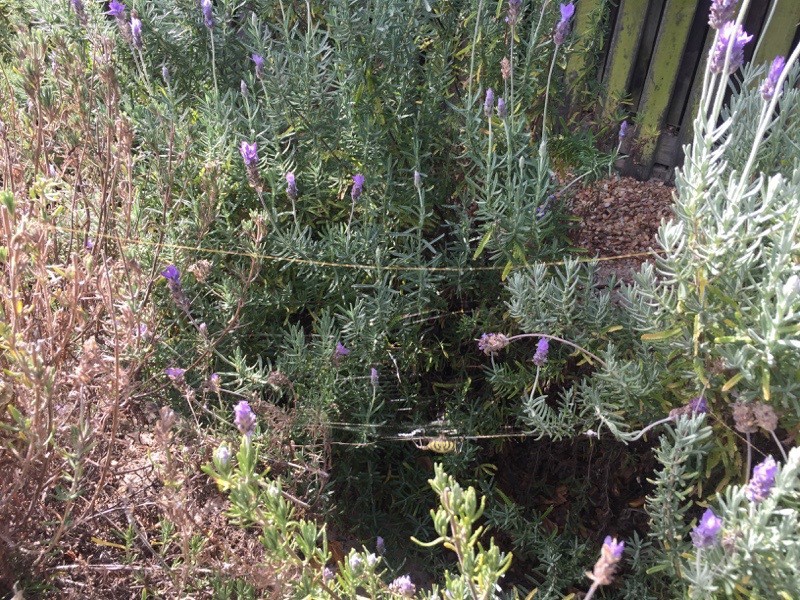
So there you have it, all that you never ever wanted to know about ostriches, and perhaps more. Dan enjoyed the tour but it soon fell into the “more than enough” category for him. The girls could have watched the baby ostriches all day. Maybe when we get our Sherman Apocalypse Farm they’ll get the chance. If they need me, I’ll be walking around the farm dusting and carrying my beautiful ostrich purse.
